Sapphire Web Pack Vendor Purchases Overview
Vendor Purchases in SapphireOne is an integral part of the Data Entry mode in Sapphire Web Pack. A Web Pack Order specifies the arrangement to perform a commercial transaction for services, goods, items, and/or inventories. It documents the requirements from your Vendor, including the agreed price, delivery date, and quantities for each item. Each item can be linked to a Job Project at the line level, integrating with your SapphireOne Job Projects Gantt chart. Additionally, the order can be linked to an Asset Account within your SapphireOne asset register.
A Web Pack Order automatically calculates the total weight based on the number of units ordered, including the number of cartons and pallets. It also identifies tariffs, duties, and on cost factors for imported goods, which can be allocated by Dollar Value, Volume, Weight, and other matrices.
Not all orders may be fully fulfilled. If a vendor can only supply 50% of your order, the delivered portion converts to a Purchase Vendor Invoice (PVI), while the remaining balance stays on backorder. You can choose to convert goods to inwards goods or directly to a PVI. This provides relevant costs and revenue details at the inventory level, including Client and Job Project P&L/Income Statement.
The Web Pack Order, also known as a Vendor Order or Order Vendor Invoice (OVI), is the second item on the SapphireOne Inventory Purchases Data Entry menu. It formalises the payment and shipping terms with your Vendor.
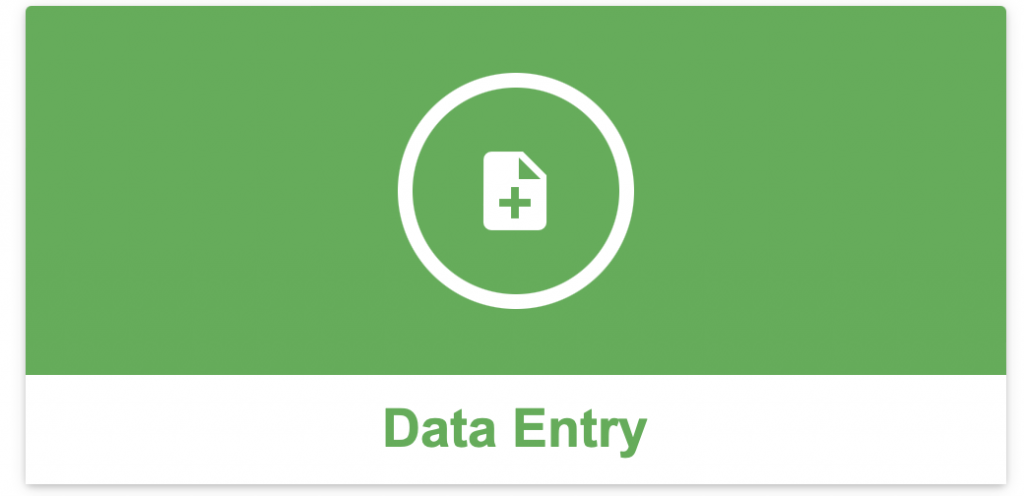
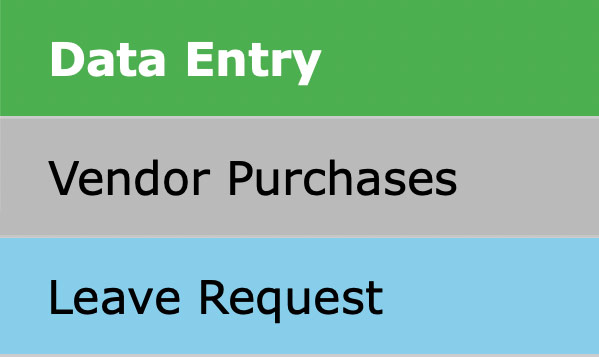
From the Inquiry menu in the Sapphire Web Pack, there is a function named Vendor Purchases. When it is open on screen, there is a single Purchase button ![]() near the top of the screen. When the Purchase button is selected, Sapphire Web Pack will display the Vendor Purchases modal screen with the Order and Invoice options. From this point on, the data entry procedure for the entry of a Sapphire Web Pack order or an Invoice is identical.
near the top of the screen. When the Purchase button is selected, Sapphire Web Pack will display the Vendor Purchases modal screen with the Order and Invoice options. From this point on, the data entry procedure for the entry of a Sapphire Web Pack order or an Invoice is identical.
Sapphire Web Pack Order Vendor Invoice Overview
A Sapphire Web Pack Order vendor Invoice (OVI) is a stated or specified arrangement/intention to perform a commercial or business transaction or order for your chosen services, goods, items, and/or inventories. A Purchase Order documents the requirements of your Vendor, identifying the services, goods, and inventory items that you require to be supplied to yourself.
As part of the requirement by yourself on your vendor, you will have identified the price you’ve agreed to pay for each inventory item and goods or services, the date you want it delivered, and the quantities you want delivered of each of those line items. Additionally, each item can be linked to a Job Project at the line level. This would then form part of your resources and activities and will form part of your SapphireOne Job Projects Gantt chart.
The Purchase Order can also be linked to an Asset Account within your SapphireOne asset register to purchase inventory items and/or goods and services from a vendor. An Order Vendor Invoice (OVI) also has the ability to automatically calculate weight based on the number of units you’ve ordered, resulting in a total weight per line. Since the weight is predefined within your inventory item, it will also determine the number of inventory items in a carton, providing a total carton count. The same process applies to pallets, yielding a total pallet count. For instance, this occurs when you have ordered a specific Order Vendor Invoice (OVI).
We can also identify if a tariff is involved. So, if you’re importing goods from an overseas vendor, you’ll be able to identify the tariff, duty, amount, and percentage, as well as determine if you have an on-cost factor. The on-cost factor will automatically link to your importer, and you’ll be able to allocate the on-cost across your importer. This allocation could be by container or by shipment. The allocation can be determined by dollar value, volume, weight, and a number of other matrices.
In turn, not all Purchase orders will be able to be 100% fulfilled. For example, in the circumstance that your vendor can only supply 50% of your Purchase Order Vendor Invoice (OVI), when 50% of goods are delivered, the 50% will be converted to a Purchase Vendor Invoice (PVI) and the remaining balance will be contained within the original Order Vendor Invoice (OVI).
This will remain on backorder until your vendor can provide the balance of the outstanding Order Vendor Invoice (OVI). Alternatively, you may choose to convert the goods with inwards goods, or directly to a Purchase Vendor Invoice (PVI). In this instance, you have two distinct options for receiving these goods. One option is Inwards Goods, which receives the goods without a cost, or the second option is to convert them directly to a Purchase Vendor Invoice (PVI) with the cost per line. This will provide, at an inventory level, all the relevant costs and revenue via inventory items, client, and also job project and job project P&L/Income Statement.
An Order Vendor Invoice is a formal order for goods and/or services that you provide to your Vendor in order to complete a Vendor Order. It is also where SapphireOne formalises the payment and shipping terms.
Sapphire Web Pack Purchase Vendor Invoice Overview
The Sapphire Web Pack Purchase Vendor Invoice (PVI) is your formal record of the confirmation of the receipt of goods, services, and/or inventory from your vendor/supplier. This will have been formed as part of the original Order Vendor Invoice (OVI), which also has a Delivery and Arrival process, detailing inventory arrival into your warehouse or organisation.
As part of the arrival process, it will be converted to a Purchase Vendor Invoice (PVI). That Purchase Vendor Invoice (PVI) will contain all the line items that were delivered by your Vendor, and those lines will contain information such as Inventory IDs, Inventory descriptions, the number of units, the quantity, the rate that you’ve agreed to pay your Vendor, any discounts that have been applied to each line by your Vendor or the appropriate taxes.
Sapphire Web Pack Purchase Order also allows the user at each line level to link the Purchase Vendor Invoice (PVI) to a Job Project or to an Asset as part of the inventory management. If you’ve set up the weight for each inventory item, it will automatically show the total weight that you’ve received, the number of cartons, how many inventory items will be in a carton, how many will be in a pallet, and you’ll also have a secondary weight as well.
Sapphire Web Pack Purchase Order also supports a Wine Equalisation Tax (WET) and it is able to manage the tariffs and duties that may have been incurred on each line. You also have an on-cost factor on each line of inventory and an on-cost to each inventory item. The final cost is then presented as part of the SapphireOne Purchase Vendor Invoice (PVI).
Sapphire Web Pack also allows recording to the Document Management System (DMS). Typically, the user would scan a copy of the delivery docket and the finalised Purchase Vendor Invoice (PVI). The final Purchase Vendor Invoice (PVI) may come in the form of an email and that email would be attached. It can also be sent as a PDF and the SapphireOne PDF capture can be utilised as a function within SapphireOne, to the Purchase Vendor Invoice (PVI). Sapphire Web Pack Purchase Order also has the ability to retain a tag on the Purchase Vendor Invoice (PVI). On that tag, you can customise to meet your own requirements.
Selecting an Order Vendor Invoice (OVI) or Purchase Vendor Invoice (PVI)
When the Vendor Purchases option is selected, SapphireOne will present the user with a modal screen with two options – Order and Invoice. From this screen the user is able to create a new Order Vendor Invoice (OVI) or a new Purchase Vendor Invoice (PVI).

- Selecting the Purchase Type – Select from the two options, Order or Invoice.
- Choose a Vendor – Once you have made a selection of the purchase type, SapphireOne will display a list of Vendors to choose from. A wild card search is allowed using the @ symbol to replace characters in the Vendors ID.
- Choose Inventory – Once a Vendor has been selected, SapphireOne will immediately display the Choose Inventory modal screen A wild card search is allowed using the @ symbol to replace characters in the Inventory ID. The user has two choices when this screen is displayed:
- Select an inventory item by clicking on it. SapphireOne will immediately open the Vendor Invoice screen ready for the entry of a quantity.
- Select the ‘x’ in the top right-hand corner of the alert. SapphireOne will display the same Vendor Invoice screen, but there will not be a line in the Invoice. It will be ready for the adding of lines to the transaction.
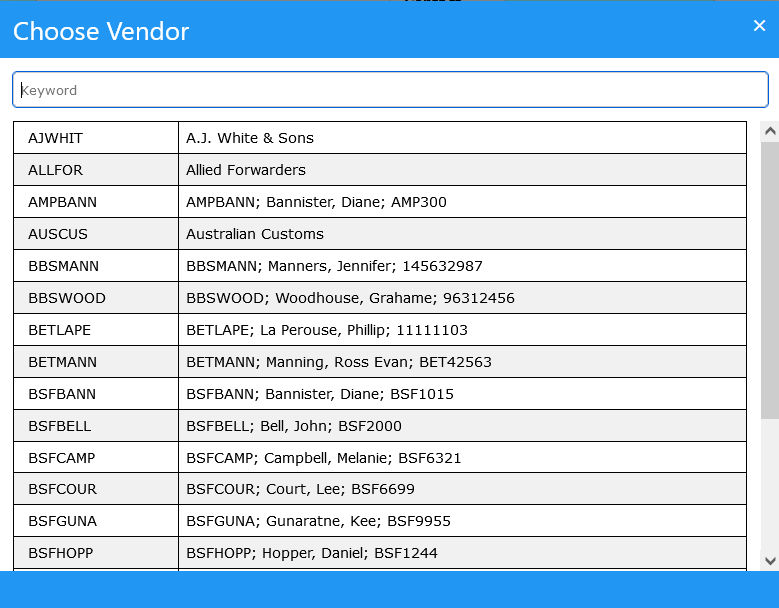
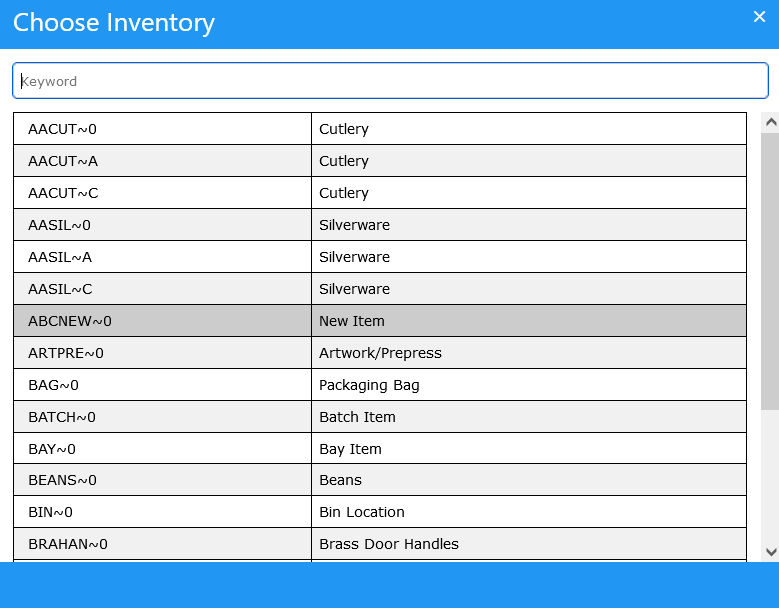
- Once the initial Inventory item has been selected, SapphireOne will display the requested Vendor Order or Invoice screen ready for data entry by the user. In most cases, the entry of quantities for the inventory items is all that will be required. To add lines, select the new button
 to delete lines, select the delete button
to delete lines, select the delete button  .
.
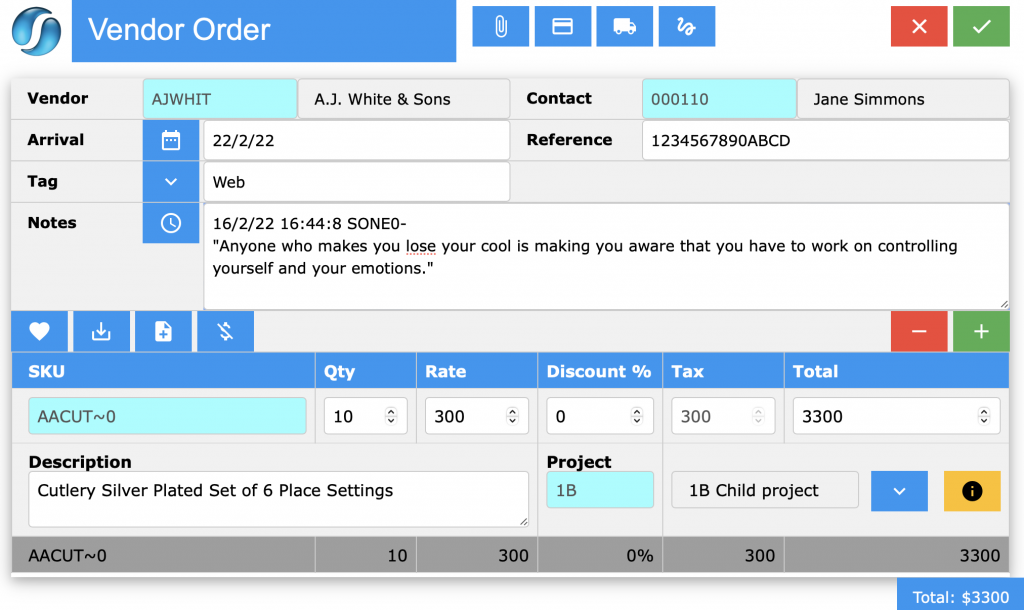

Vendor Related Buttons
There are two groups of buttons on these invoice screens, and the group in the Vendor details areas perform the following functions:
- Document – When the Document button
 is selected, SapphireOne will display the devise explore file system dialog allowing the user to attach a document to this invoice.
is selected, SapphireOne will display the devise explore file system dialog allowing the user to attach a document to this invoice. - Payment – When the Payment button
 is selected, SapphireOne will display the Payment form allowing the user to directly enter the amount into the selected type of payment.
is selected, SapphireOne will display the Payment form allowing the user to directly enter the amount into the selected type of payment. - Delivery – When the Delivery button
 is selected, SapphireOne will display the delivery address details. This will allow the user to check and if necessary alter the Delivery Address where this item is to be delivered.
is selected, SapphireOne will display the delivery address details. This will allow the user to check and if necessary alter the Delivery Address where this item is to be delivered. - Signature – When a signature is required, the user may select the Signature button
 . SapphireOne will display a form allowing the user to enter a signature for the transaction.
. SapphireOne will display a form allowing the user to enter a signature for the transaction.
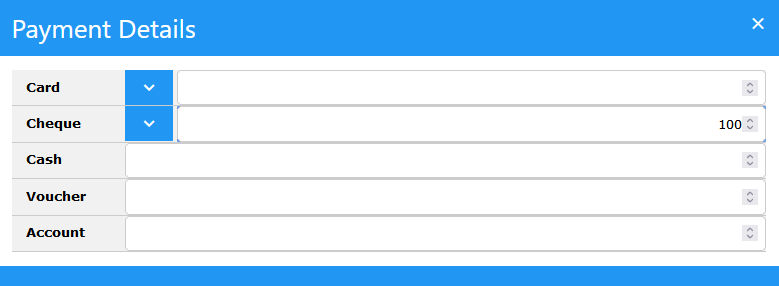
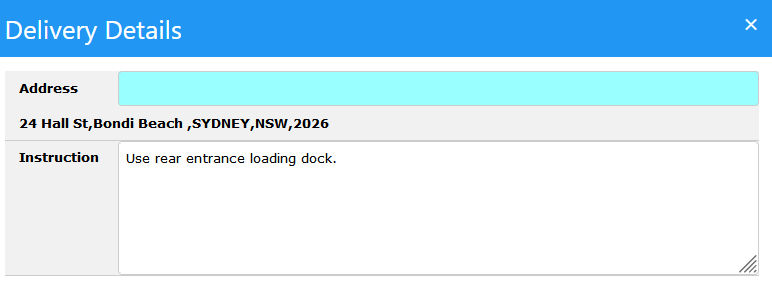
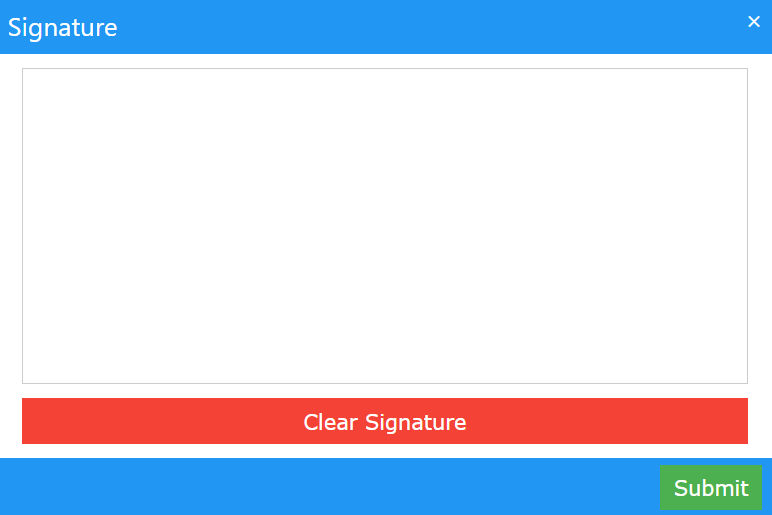
Transaction Line Area

Lines in transactions have the following available features:
- Description Field – The inventory item description can be viewed and modified here.
- Project Field – Select a project to associate with the line. This data entry field has a light blue background which indicates that wildcard entry and selection of inventory items is allowed for.
- Add Line – When this new button
 is selected, SapphireOne will add an additional line to the transaction ready for the entry of a new line item.
is selected, SapphireOne will add an additional line to the transaction ready for the entry of a new line item. - Delete Line – When this delete button
 is selected, SapphireOne will delete the currently selected line. Note that it will not delete the line if it is only one line remaining in the transaction.
is selected, SapphireOne will delete the currently selected line. Note that it will not delete the line if it is only one line remaining in the transaction. - Add Asset – When the Add Asset button
 is selected, SapphireOne will expand to display an additional line, allowing for the selection of an asset to be linked to this line in the transaction. If the inventory is product type GL, an additional dynamic field will be displayed, allowing for association with a GL account.
is selected, SapphireOne will expand to display an additional line, allowing for the selection of an asset to be linked to this line in the transaction. If the inventory is product type GL, an additional dynamic field will be displayed, allowing for association with a GL account. - More Info – When this More Info button
 is selected, Sapphire Web Pack will display a modal. screen with additional information for the selected Inventory item. Stock levels at all locations for the inventory item selected will be displayed.
is selected, Sapphire Web Pack will display a modal. screen with additional information for the selected Inventory item. Stock levels at all locations for the inventory item selected will be displayed.
Here is the corrected version of the text:
“Add Asset – When the ‘Add Asset’ button is selected, SapphireOne will expand to display an additional line, allowing for the selection of an asset to be linked to this line in the transaction. If the inventory is set to type GL, an additional dynamic field will be displayed, allowing for association with a GL account.
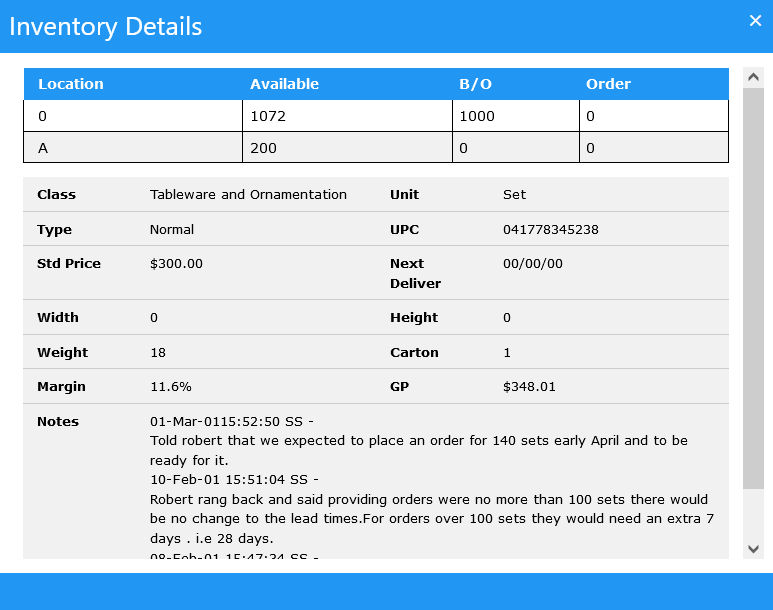
Lines in Transactions
Lines in transactions may be entered in two ways:
- Discount – When the discount button
 is selected, SapphireOne will display a screen where a discount may be applied to this transaction. Enter the discount as a percentage or as a dollar amount.
is selected, SapphireOne will display a screen where a discount may be applied to this transaction. Enter the discount as a percentage or as a dollar amount. - Direct Entry – In the SKU or ID area, enter the ID of the inventory lines required or if scanning and barcodes have been set up, scan the item into the transaction. This data entry field has a light blue background which indicates that wildcard entry and selection of inventory items is allowed for.
- Selection Buttons – Use one or more of the four buttons documented below:
- Popular Inventory items – When the Popular Inventory Items button
 is selected, SapphireOne will display a list of the most commonly ordered Inventory items for the Vendor. When an Inventory Line is selected, SapphireOne will place an ‘x’ in the right-hand column. When you have made your selections, select the Load button
is selected, SapphireOne will display a list of the most commonly ordered Inventory items for the Vendor. When an Inventory Line is selected, SapphireOne will place an ‘x’ in the right-hand column. When you have made your selections, select the Load button  to load the items into the transaction.
to load the items into the transaction. - Copy Lines from Past Invoice – When this Copy Lines
 button is selected, SapphireOne will display a list of past invoices for the client. When one of these invoices is double-clicked on, the lines will be imported into the current transaction.
button is selected, SapphireOne will display a list of past invoices for the client. When one of these invoices is double-clicked on, the lines will be imported into the current transaction. - Drop Lines from File – When this Document button
 is selected, SapphireOne will open the local devices file system dialog. This allows the user to export lines, upon saving the client or vendor will receive an email with a text file attachment, which they can then import into SapphireOne .
is selected, SapphireOne will open the local devices file system dialog. This allows the user to export lines, upon saving the client or vendor will receive an email with a text file attachment, which they can then import into SapphireOne .
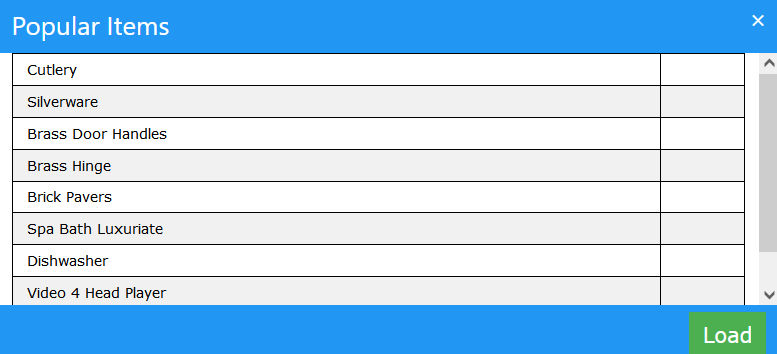
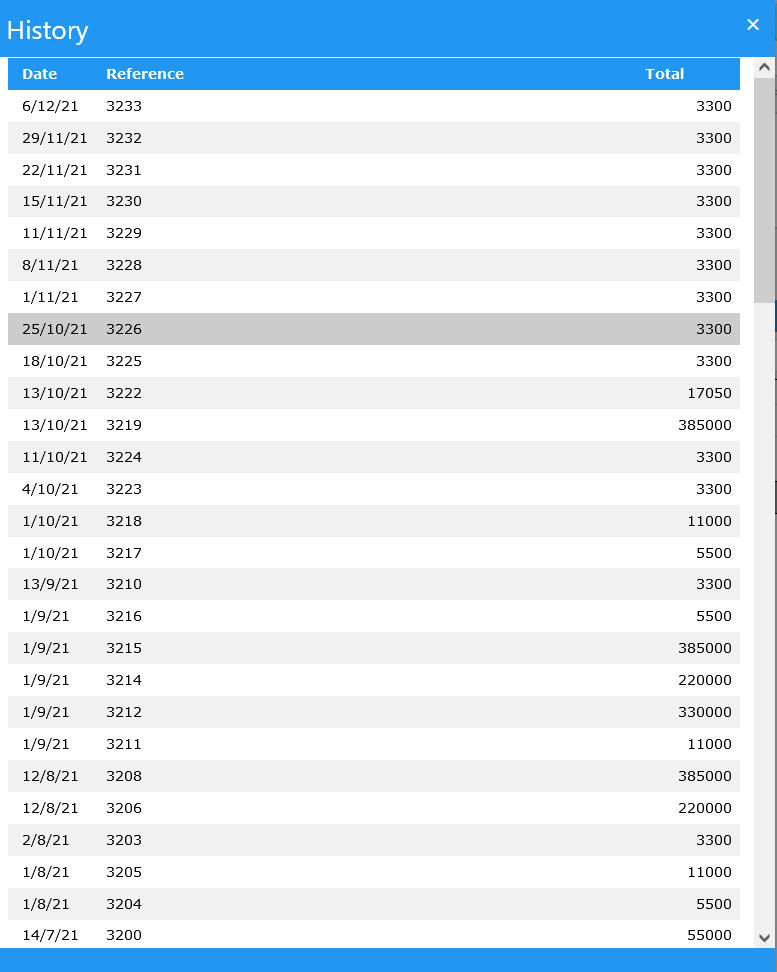
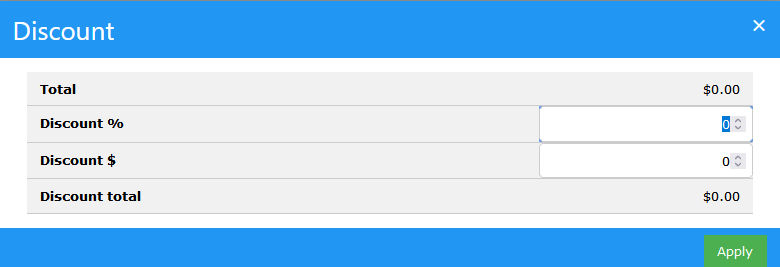
When the transaction is complete, select the save button ![]() . Alternately if the user wants to cancel the transaction, select the delete button
. Alternately if the user wants to cancel the transaction, select the delete button  . An alert will be displayed.
. An alert will be displayed.
This structured approach ensures clarity and standardisation in managing Vendor Purchases within Sapphire Web Pack.
You can review our Blog and YouTube channel for additional information and resources on SapphireOne ERP, CRM and Business Accounting software.